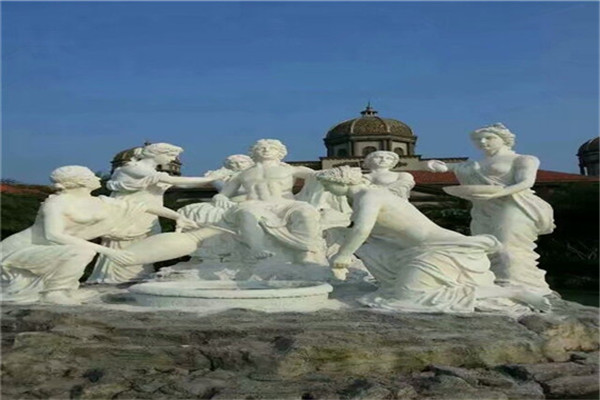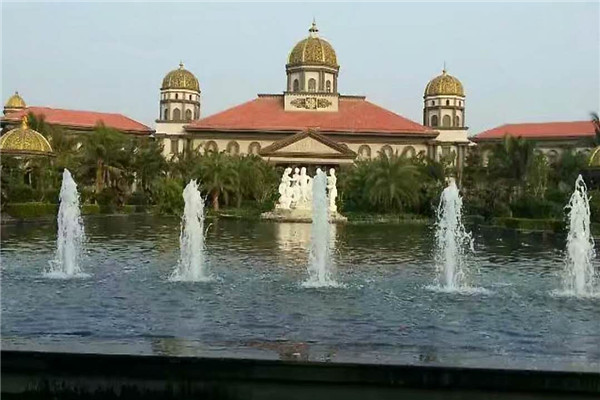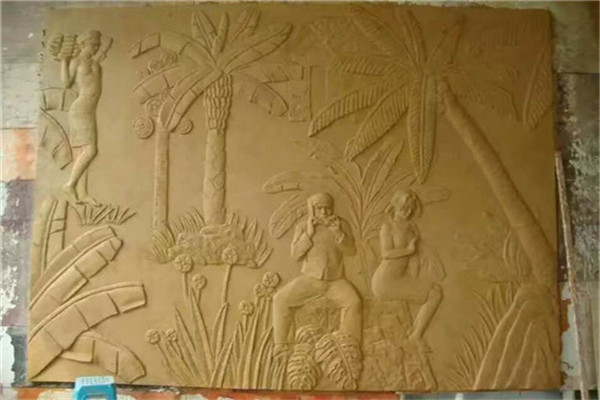
Exterior wall decorative panel is a new type of integrated material for building exterior wall decoration and insulation developed in recent years, which is composed of polyester baking paint or fluorocarbon paint, carved aluminum zinc alloy steel plate, polyurethane insulation layer and glass fiber cloth; It is mainly used for exterior wall decoration and energy-saving reconstruction of gymnasiums, libraries, school and hospital office buildings, villas and other buildings; The main functions are building decoration, heat preservation, energy conservation, heat insulation, sound insulation, waterproof and mildew proof. The metal surface decorative insulation board is a large external hanging wall board produced in industrialization. It has good durability and low maintenance cost due to dry installation construction. It integrates the external wall insulation and decoration functions, conforms to the development direction of building energy conservation "modularization" technology, and is an advanced technology vigorously promoted in the field of external temperature protection technology of building walls in China.

The art of carving various patterns and images on stones, usually also refers to sculpture handicrafts carved from stones. Chinese stone carving can be divided into bluestone carving, marble carving, white marble carving, talc carving, black crystal stone carving, colored stone carving, pebble carving, etc. Hui'an, Fujian, is famous for its bluestone carvings for architectural decoration and stone lions, among which the mouth of the stone lion contains stone beads that roll freely, and is famous in Southeast Asia. The marble carving in Yunnan is made from the marble of Diancang Mountain. Its patterns are like colored mountains and rivers, or dangerous peaks and valleys, or waterfalls follow the clouds. The inlaid furniture is unique. White marble carvings in Quyang, Hebei, Fangshan, Beijing and other places were mainly used for palace architectural decoration in the Ming and Qing dynasties, such as Huabiao, stone lions, railings, etc; Modern times are used for decoration of public and memorial buildings, such as the Great Hall of the People, the Monument to the People's Heroes, Chairman Mao's Memorial Hall, etc. Talc carvings in Haicheng, Liaoning Province and Laizhou, Shandong Province use small and cute animals as traditional varieties. The carvings of black crystal stone in Dongkou, Hunan and Lichuan, Hubei are dark and bright. Caishi carving is mainly produced in Qingtian, Zhejiang, Shoushan, Fuzhou, and Liuyang, Hunan. Pebble carvings are mainly produced in Lanzhou, Shenyang and other places. Stone carving techniques include intaglio (contour carving), shadow carving, relief, round carving (complete three-dimensional carving without any background), and openwork (also known as openwork). Shadow carving is a unique technique of Fujian Hui'an bluestone carving. It uses steel drills of different sizes to chisel on the bluestone, and uses the size, depth and density of the drill points to express the images of landscapes, birds, animals, people, flowers, etc.

Components are reusable software modules oriented to software architecture. Yangjiang Sculpture processing It is a reusable software component that can be used to construct other software. It can be encapsulated object classes, class trees, some functional modules, software frameworks, software architecture (or architecture), documents, analysis pieces, design patterns, etc. In 1995, Ian Graham defined components as follows: Sculpture processing Price Component refers to an object (interface specification, or binary code), which is used for reuse, and the interface is clearly defined. Hainan sculpture component appears as a logic tight program code package with a good interface. For example, Ada's Package, Smalltalk-80 and C++'s class and data type can all belong to the component category. However, the operation set, procedure and function can not become a component even if they can be reused. Developers can develop new application systems by assembling existing components, so as to achieve the purpose of software reuse. Software component technology is the key factor of software reuse, and also the focus of software reuse technology research.

It is a three-dimensional plastic art to use certain material materials to produce works of art with solid image. Because the production methods are mainly sculpture and molding, it is called sculpture. According to the production process, sculpture can be divided into two categories: sculpture and sculpture. Subdivision is divided into carving, carving, molding, chiseling, carving, casting and other skills and techniques. According to genre, sculpture can be divided into memorial sculpture, urban garden sculpture, sculpture, tomb sculpture and exhibition sculpture. According to the style, sculptures can also be divided into head portrait, bust portrait, bust portrait, full body portrait, group portrait, etc. According to the technique and form of expression, sculpture can be divided into three categories: round sculpture, relief sculpture and openwork sculpture. Round sculpture, also known as "muddy sculpture", is a three-dimensional sculpture that is not attached to any background and can be viewed from all sides. The round sculpture is characterized by a solid image standing in space. When creating it, one must take into account its sense of volume and weight. When shaping the image, one must also take into account that people watch it from different angles. Relief, also known as "relief", is to carve a convex artistic image on the plane. According to the different degrees of surface relief, relief can be divided into high relief (high and low relief, deep relief) and low relief (low and low relief, shallow relief). The openwork is between the round sculpture and the relief sculpture. On the basis of the relief sculpture, it is made by hollowing out the background, but it does not leave the plane, just like a round sculpture attached to the plane background.




